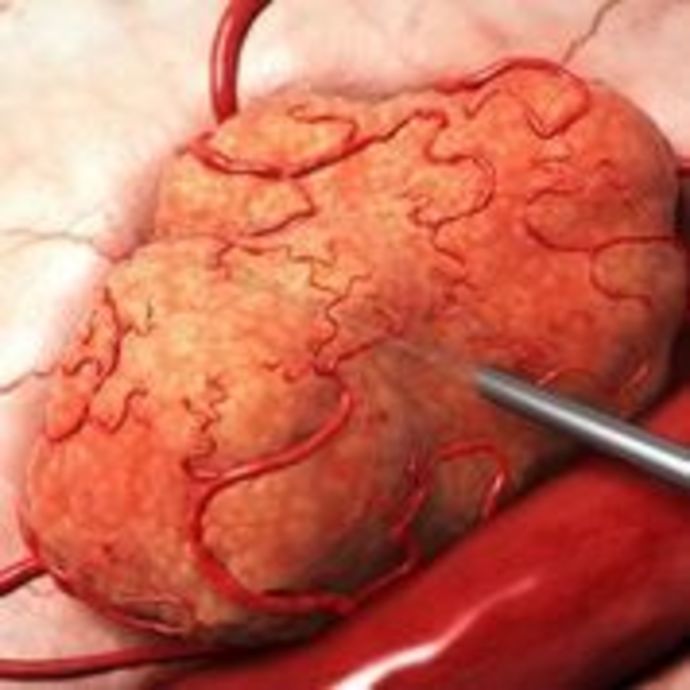Michael (name changed) suffered from a huge tumor on his neck that was benign and didn’t endanger his health but certainly posed an aesthetic hazard. When a way to remove it was finally found, Michael didn’t hesitate to say goodbye to the tumor. How did this happen? The details are below.
When Michael noticed a small swelling that had grown on the base of his neck, he didn’t think it would become an aesthetic problem, but over time this swelling developed into a significant tumor that damaged his appearance. Michael was diagnosed with a developmental malformation in his neck called lymphangioma.
What is lymphangioma?
Lymphangioma is a developmental malformation of the lymphatic system characterized by a lesion consisting of numerous cysts with a thin membrane. These lesions usually appear up to the age of two and involve the head and neck but can appear at any age and may affect any part of the body. Some tumors occur spontaneously, while others may develop after an injury or an infection. Yet, these are benign processes and have no potential to become malignant.
Usually these defects are removed surgically, but in most cases it’s impossible to completely remove a tumor in one operation, so several surgeries are required. Michael’s lymphangioma appeared in his early teens and gradually reached very large dimensions. The location, at the base of the neck, was a problem since it was near nerves and large blood vessels. The tumor grew to more than 10 centimeters and was impossible to treat surgically. The size made it very noticeable and caused significant aesthetic damage to Michael’s appearance.
"The tumor didn’t interfere with my daily routine and I didn’t feel pain. I could sleep, drive, raise my hands easily and exercise, but it bothered me aesthetically,” Michael said. “I was uncomfortable with how people looked at me and of course I didn’t feel comfortable going to the sea and pool.”
Goodbye tumor
Although Michael used humor to cope, of course he wanted to get rid of this aesthetic hazard as soon as possible. At the age of 15, he underwent his first attempt to remove it, but this treatment failed and was very painful.
Michael and his parents sought another solution and came to A.R.M., the multidisciplinary center for ENT (ear, nose, throat) medicine, which specializes in head and neck surgery, and were referred to Dr. Shmulik Meirsdorf for consultation and treatment. This doctor is a specialist in diagnostic and invasive radiology for sclerotherapy treatment.

What is sclerotherapy?
Sclerotherapy is a topical treatment for cystic processes in which a substance is injected that causes damage to the tissue of the lesion’s membrane and prevents the secretion and reabsorption of lymph fluid into the lesion and thus significantly reduces it. It’s performed by a radiologist who specializes in invasive imaging using real-time imaging (usually ultrasound). First, the liquid contents of the lesion are aspirated and then the sclerosant material is slowly injected into it for a short time. At the end of the operation the sclerosant material is sucked out as well.
The treatment is performed under local anesthesia in a clinic. There’s no need for surgery or hospitalization, and there’s no scarring. It’s a minimally invasive treatment that is suitable not only for lymphangioma, but also for other cystic processes in the neck (including the thyroid and salivary glands), but it isn’t suitable for every patient. Like any invasive procedure, sclerotherapy has risks and its success isn’t guaranteed.
Michael’s treatment was particularly complex due to the size of the tumor and its location.
"The tumor was so large that I was limited in the amount of material that could be injected and I warned Michael and his parents that the operation might not work,” the doctor said. “I was also afraid of leaking material and causing damage to the healthy tissue within the lesion.”
The doctor added that after all the risks were outlined, Michael and his parents decided to try the treatment.
To Michael’s delight, even after one treatment, Dr. Meirsdorf was able to significantly reduce the lesion and after several months of waiting, Michael was re-examined to ensure that the tumor was stable and hadn’t started to re-grow. So,it was decided to perform further treatment to try to reduce the lesion even further, in order to get further aesthetic improvement.
Michael says that he felt really relieved after the treatment.
"I felt I was back to myself and I now feel much more comfortable with my body,” he said. “The serious plus was also that it went easily, without hospitalization and without pain. Michael will have to continue the follow-up to make sure that the lesion doesn’t start to re-develop. However, according to Dr. Meirsdorf, if the tumor develops again, sclerotherapy can be repeated, since it’s a treatment that is considered safe.
